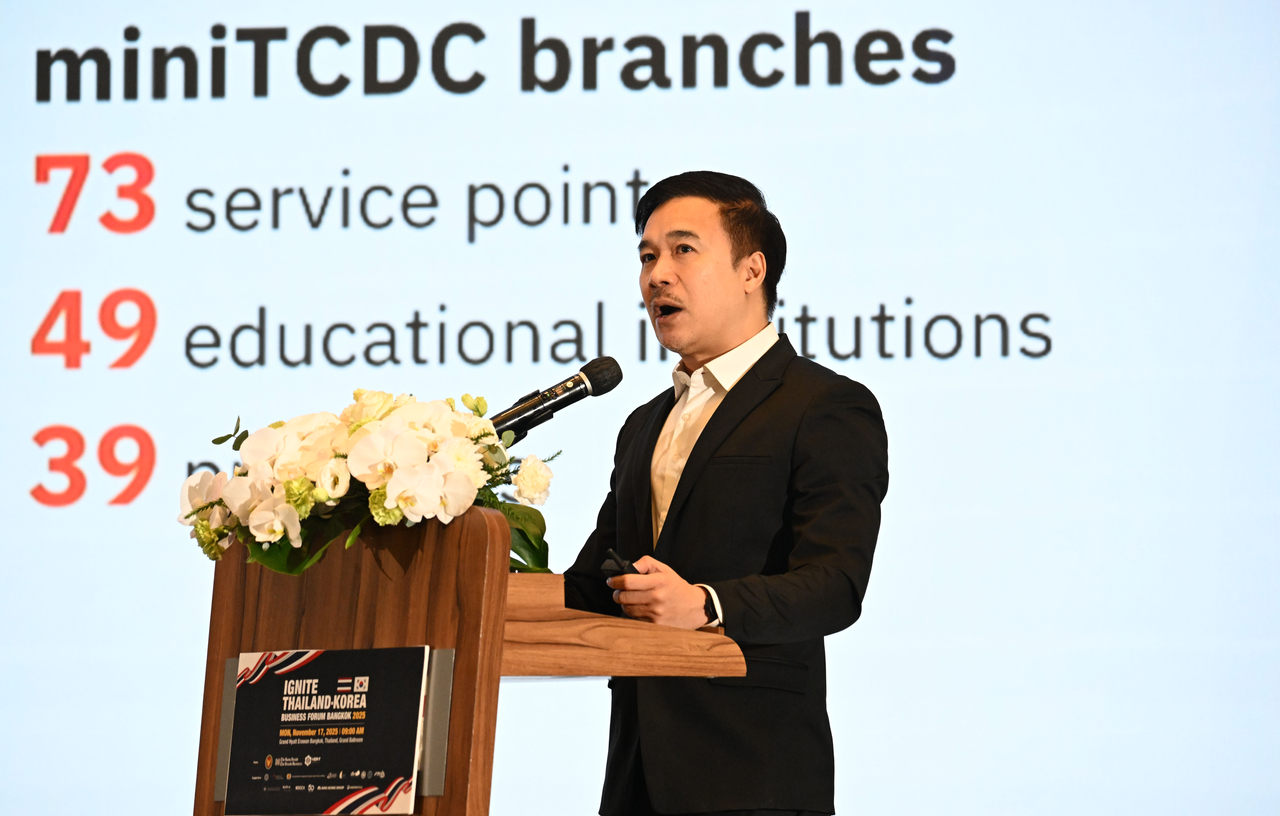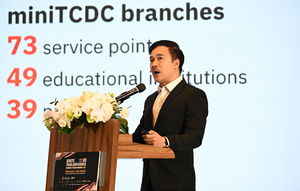 Chakrit Pichyangkul, director of the Creative Economy Agency, speaks at the Ignite Thailand-Korea Business Forum in Bangkok on Monday. (Park Hae-mook/The Korea Herald)
Chakrit Pichyangkul, director of the Creative Economy Agency, speaks at the Ignite Thailand-Korea Business Forum in Bangkok on Monday. (Park Hae-mook/The Korea Herald) BANGKOK — Thailand is turning to cultural and digital industries — spanning fashion, design, film, music and software — as new growth engines beyond traditional industrial sectors. Together, they form the country’s “creative economy,” which Thailand is working to transform into a technology- and intellectual property-driven growth model.
According to Thailand’s National Economic and Social Development Council, the country’s creative economy now stands at $44.5 billion — just over 8 percent of gross domestic product — with around 989,700 people employed across the sector and more than 93,000 business models operating nationwide.
Chakrit Pichyangkul, director of the Creative Economy Agency, said these industries are increasingly contributing to Thailand’s long-term economic strategy, yet their potential remains underestimated compared with traditional sectors.
“People often assume economic success comes from manufacturing or heavy industry,” he said at the Ignite Thailand-Korea Business Forum, co-hosted by Herald Media Group — publisher of The Korea Herald and The Korea Herald Business — and the Thai Embassy in Seoul. The event was held Monday in Bangkok.
“But Thailand’s creative economy already accounts for slightly more than 8 percent of gross domestic product and shows how powerful creativity can be as a national growth driver.”
Established in 2018, the CEA is the Thai government’s dedicated agency for nurturing creative industries. Chakrit said the agency has placed particular emphasis on sectors involved in making content, as these fields rely more heavily on originality and creative skills than others, enabling high-quality employment and value-added production.
“The content industry is the sector with the highest creative intensity,” he said. “It reflects the ability to create high-quality jobs and produce high-value products and services.”
Although the content industry currently accounts for slightly less than 7 percent of Thailand’s overall creative economy, Chakrit said it is estimated to generate around $21 billion in wider economic impact, driven by advertising, entertainment, digital media and related services. The sector itself is valued at roughly $3 billion, according to the same NESDC data.
Thailand’s content sector has also seen growing global success. Thai-made Netflix titles such as “Mad Unicorn” (2025), “Master of the House” (2024) and “Hunger” (2023) have drawn strong international audiences, while the blockbuster “How to Make a Billion Before Grandma Dies” (2024) is nearing $100 million in global revenue — the highest figure in Thai film history.
Cross-border co-productions are expanding as well, including Thai–Korean horror film “The Medium” (2021), Thai–Chinese animated feature “Out of the Nest” (2024) and “Running Man Thailand,” a joint project from Chinese streaming service iQIYI and Korea’s SBS slated for release next year.
“Thailand is ready to work more closely with global partners in content and creative businesses,” Chakrit said, expressing hope that increased collaboration and investment will further accelerate the country’s creative growth.
As part of efforts to develop industry talent nationwide, the CEA operates four regional offices and the flagship Thailand Creative & Design Center, a public learning hub that offers resources, training and access to facilities for aspiring creators.
Over the next three years, the agency plans to open 20 additional TCDC sites across the country. It also works with 49 domestic universities to provide creative training programs for students.
flylikekite@heraldcorp.com
